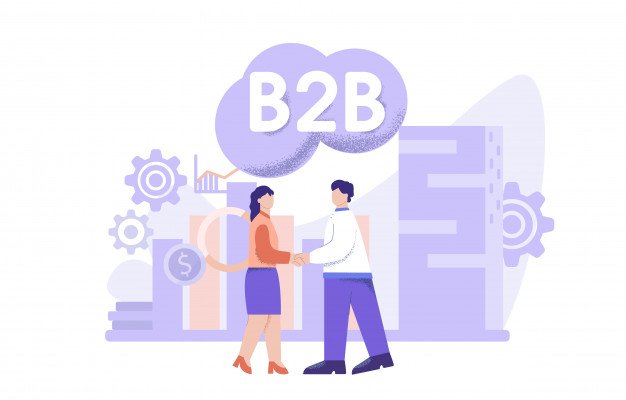- Are you an E-commerce brand or platform that is looking for experts to run mobile app testing for your channels?
- Do you how specialized software testing services can help you climb over your competitors in the E-commerce space?
- Have you looked at enlisting the services of experts like QA Madness that can help you grow your E-commerce platform?
Time and again, we see blogs on the internet that suggest running an E-commerce platform is as easy as eating a piece of cake. To be honest, if being successful and generating sales in E-commerce would be so easy, everyone would be acing it.
The fact of the matter is that E-commerce is not easy. It requires a lot of effort, time, strategy, and resources. You cannot simply create an E-commerce website and hope to become the next Jeff Bezos!
In this article, we look at how performance testing for E-commerce platforms is essential for garnering success. We take help from leading experts and friends at QA Madness to understand what goes into making a successful E-commerce business.
What is Performance Testing and why your E-commerce Business should Invest in it?
In simple words, without sounding too nerdy, let us try to look at what is Performance Testing.
Performance Testing is the process of rigorously testing all the tech and digital components of an E-commerce business. This includes the desktop version of the platform and mobile app testing. The key is to look at and analyze how the entire tech and digital ecosystem operates when exposed to real-world use.
Imagine hundreds of people are using the E-commerce platform app at the same time. The questions that then arise are-
- Is the server being able to handle the heavy load of all the traffic using the mobile app at the same time?
- Is there a lag or breakdown that any of the users are experiences or are the UI and UX getting compromised under stress?
- What are some of the benchmarks and standards that should be used to judge speed and whether the platform is exposing some bottlenecks?
Performance Testing is more than just looking at loading page speeds. It seeks to test each aspect of the E-commerce platform and suggest the perfect optimization for the same.
4 Important Things to consider during Performance Testing for E-commerce:
In this section, we request experts at QA Madness to help us. Specifically, to list down some important things that should be considered during Performance Testing-
1. Testing Financial Transactions-
One area where things can go wrong is in the area of financial transactions. With so many people using the same platform at the same time, you need to test to ensure that every transaction is going through. Integrations with Payment Gateways, the ERP, and Inventory Management Software are all areas that should be covered under this software testing services.
1. Checking the Mobile App Exhaustively-
Mobile app testing perhaps constitutes one of the most important verticals for Performance Testing. How the app performs, is the search is optimized, whether the graphics are getting compromised are all issues that mobile app testing will help resolve. In addition to the app, the mobile version of the E-commerce platform’s website also needs to be tested rigorously.
2. Region-Based Testing for Different Geographies-
If you are starting an e-commerce business, you are looking at a truly global audience. This is why you need to make sure that the internet protocols of the different countries are not interfering with how the customers in those countries are engaging with your platform. Changed domain URLs, IP addresses, and other rules and regulations need to be considered.
3. Data Management Testing-
Any successful E-commerce ecosystem is incomplete without integrated data management. For an E-commerce platform, data is the lifeblood that helps all its verticals- marketing, sales, and CRM. Performance Testing needs to ensure that the data collection, cloud storage solutions, and the final outputs are being generated in a systematic and orderly fashion.
The Three KPIs of Performance Testing as stated by QA Madness-
While there can be multiple KPIs that software testing services can help E-commerce brands with, QA Madness states that the following are the three major ones. They refer to the same as the three ‘S’s of their Performance Testing goals.
1. Speed–
When it comes to speed, we are referring to the speed of the website, mobile version of the web, and the mobile application. It also includes the speed with which users are progressing from one page to another on the app and the website. The higher the speed, the better will be the user experience. This combines to deliver the best sales and revenues for an E-commerce platform.
2. Scalability-
You do not want your website and app infrastructure to be so weak that it crashes only after a hundred visitors. Your E-commerce website and the app must be tested for scalability to handle massive loads all at the same time. This will help you provide a fluid experience to millions of users and potential customers all at the same time without compromises.
3. Stability–
A lot can go wrong on an E-commerce website when it is put under stress. Graphics can fall out of place and payment gateways can collapse. You never want the users to experience these problems on your platform. An E-commerce platform needs to be stable all the time, with or without load. Performance Testing seeks to build the stability of an E-commerce platform.
The Bottom Line:
There is no set rule as to when an E-commerce platform should go for Performance Testing. Some believe that it should be done at the early stages of development. Others believe that it should be done once the development of the platform is complete to identify the loopholes and then plug them accordingly.
No matter when you get them done, Performance Testing is essential for your E-commerce platform. If you want to create a highly optimized and result-oriented business, this is a great investment you should look at making.
If you have any other questions on software testing services or mobile app testing, feel free to ask them. Use the comments section to drop your queries. We will once again request, or disturb, as the case may be, our friends at QA Madness to help you out.
Read also:























